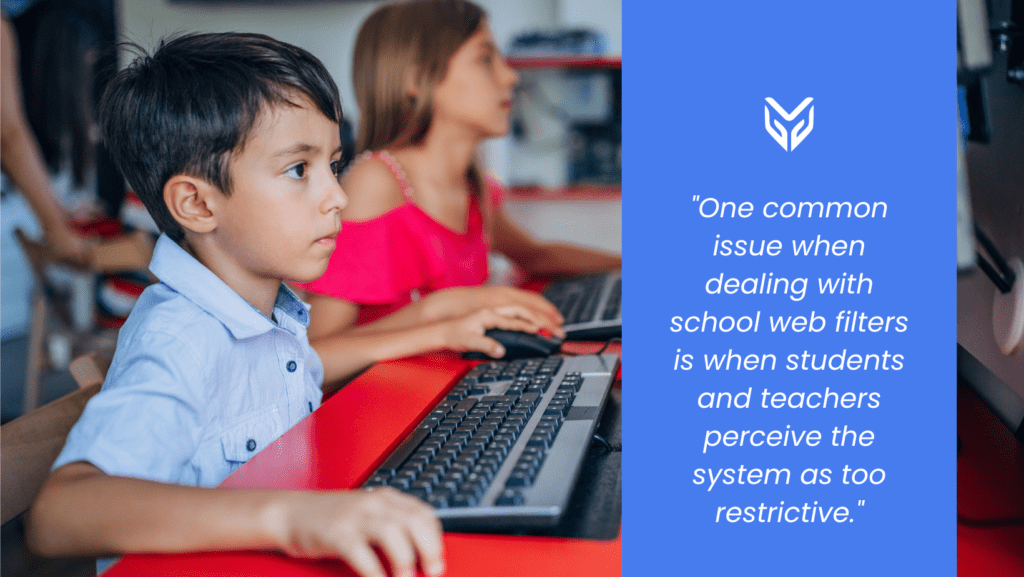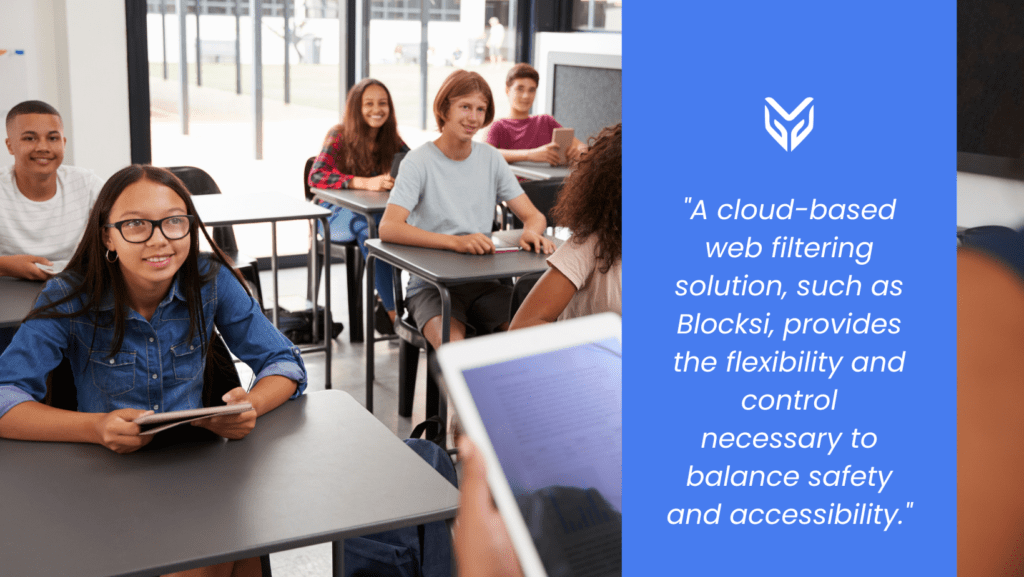NEWS
Restrict Websites in School: How and Why?

As technology continues to infiltrate classrooms, educators and tech directors are faced with the ever-pressing question of whether — and how — to restrict websites in school. The tricky part is striking the right balance between allowing access to educational resources and maintaining a safe online environment. In this article, we delve into the “how” and “why” of content filtering for schools, addressing concerns like school web filters being too restrictive and the benefits of cloud-based web filtering.
The Need for Content Filtering in Schools
Ensuring Student Safety
One of the paramount reasons to restrict websites in school is to ensure the safety of students and secure their learning. The internet is vast and often unpredictable, and not all websites suit young, impressionable minds. By implementing a school content filter, you can protect students from stumbling upon inappropriate content, cyberbullying, or online predators. Such a filter acts as a digital guardian, allowing you to control and monitor what your students can access and when.
Focusing on Educational Content
Using digital tools, students can access overwhelming information. While the internet is a repository, it can also be a bottomless pit of distractions. A well-implemented school web filter can help students and teachers stay on track by blocking websites not directly related to educational goals. This ensures that classroom time is dedicated to learning and not wandering down digital rabbit holes.

Striking the Right Balance
Avoiding a Restrictive Approach
While the need to restrict websites in school is clear, there is a fine line between safety and over-restriction. It’s essential to strike a balance to avoid making your school content filter too restrictive. Overly restrictive filters can hinder students’ access to legitimate educational resources and stifle their ability to research and learn effectively. In such cases, frustration may replace curiosity, ultimately defeating the purpose of education.
Customization is Key
To strike this balance, consider implementing content filtering for schools that allows granular customization. A system like Blocksi offers the flexibility to tailor your school web filter to your institution’s unique needs. It enables you to allow specific educational websites, ensuring that they are always accessible while blocking or restricting others that may not be suitable for your students. The school admin sets different policies, and teachers then can customize them to adjust them to particular student ages, classes, and the like.
The Challenge of Overcoming a Too-Restrictive School Web Filter
One common issue when dealing with school web filters is when students and teachers perceive the system as too restrictive. In such cases, it’s vital to maintain open lines of communication with the end users. Collect feedback from both teachers and students to understand their concerns and requirements. This feedback can help in fine-tuning the school content filter to strike a balance that fosters safety without stifling educational exploration.

So, when picking a content filter, aim for a highly customizable one and one that allows for utmost granularity – offering you the flexibility and control needed to balance safety and access. AI-powered filtering ensures potential threats and inappropriate content are marked as inappropriate in real-time, all the while analyzing content within contexts and thus providing topics like learning about the human reproductive system aren’t wrongly labeled as inappropriate because they are an essential part of education.
So, How To Restrict Websites in School Most Effectively?
Picking a highly effective content filtering solution that is most suitable for your school is essential. A cloud-based web filtering solution, such as Blocksi, provides the flexibility and control necessary to balance safety and accessibility. With the ability to choose from 30 YouTube and 85 web categories, this system ensures comprehensive and detailed filtering of your students’ online activities, swiftly identifying and addressing potential threats in real time. Simultaneously, the intricate technology guarantees that potentially harmful or inappropriate content is carefully assessed to determine whether it poses a safety concern.

Moreover, Blocksi is highly versatile and can be easily customized to work seamlessly with various devices, including Chromebooks, MacOS, Windows OS, and iOS. Its scalability allows it to handle increased workloads and growing network requirements efficiently.
In an era where technology is deeply embedded in education, the decision to restrict websites in school is a complex one. Finding the right balance is essential to protect students and ensure the utmost quality of learning.
So, the next time you consider restricting websites in school, remember that it’s not about limiting access; it’s about ensuring safe, focused, and productive access to the wealth of online educational resources.
Here is more on which questions to ask when implementing a cloud-based web filtering system for K-12, and for any more questions, you can reach out to us through the button below.
SOURCES





